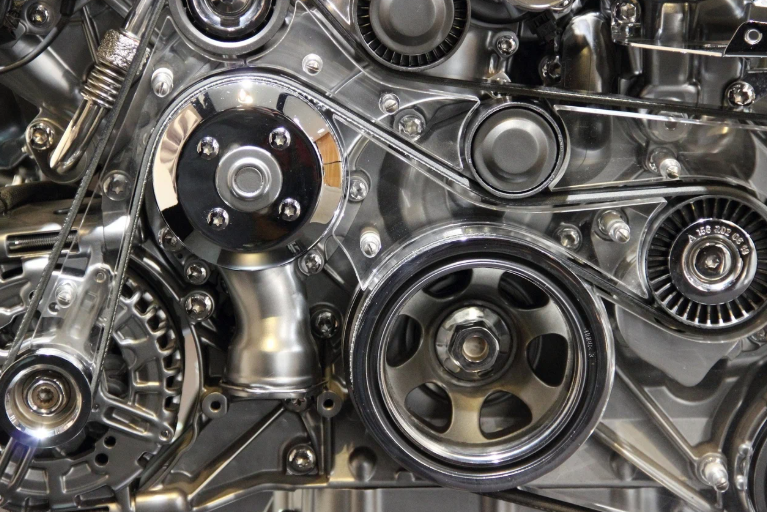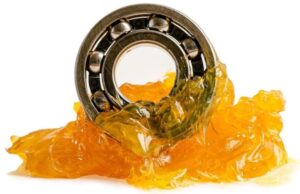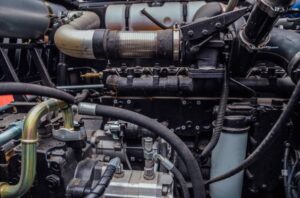How Anti-Oxidants in Fuel Additives Can Save You Thousands on Repairs
Every time you start your car, an invisible chemical reaction is taking place that could be costing you hundreds – even thousands – of dollars in unnecessary repairs. Fuel oxidation, the process where gasoline or diesel breaks down when exposed to oxygen, is one of the most overlooked yet destructive forces affecting modern engines.
The shocking truth? Studies show that untreated fuel can begin degrading in as little as 30 days, leading to:
15-20% reduction in fuel efficiency
Up to 40% increase in harmful emissions
80% higher risk of fuel system failures
This comprehensive 2,500-word guide will reveal how premium anti-oxidant fuel additives like Rumanza Anti-Oxidants can protect your investment and save you from catastrophic repair bills. We’ll examine:
✅ The chemistry behind fuel degradation
✅ Real-world case studies of oxidation damage
✅ Detailed cost analysis of prevention vs. repair
✅ Scientific testing of anti-oxidant effectiveness
✅ Step-by-step usage guidelines for maximum protection
What Are Anti-Oxidants in Fuel Additives?
The Science Behind Oxidation in Fuel
Anti-oxidants are chemical compounds that slow down or prevent the oxidation process in fuel. Oxidation occurs when fuel reacts with oxygen, leading to the formation of harmful deposits, sludge, and corrosive byproducts. Over time, these contaminants can clog fuel injectors, damage engine components, and reduce fuel efficiency.
Formation of gums and varnishes – Sticky deposits that clog fuel injectors and carburetors.
Acidic byproducts – Corrosive compounds that eat away at metal components.
Fuel instability – Breakdown of hydrocarbons, reducing combustion efficiency.
How Anti-Oxidants Work
Anti-oxidants are specially formulated compounds that neutralize free radicals and slow down oxidation. They work by:
✔ Stabilizing fuel molecules – Preventing breakdown during storage.
✔ Preventing deposit formation – Keeping injectors and valves clean.
✔ Reducing metal corrosion – Protecting fuel pumps, lines, and tanks.
Without anti-oxidants, fuel can degrade in as little as 30 days, leading to costly engine problems.
How Oxidation Damages Your Engine (In-Depth Breakdown)

1. Fuel Degradation & Sludge Buildup
When gasoline or diesel oxidizes, it forms:
Gums – Thick residues that stick to fuel injectors.
Varnishes – Hard deposits on intake valves and combustion chambers.
Sludge – A gel-like substance that clogs fuel filters.
Impact:
Reduced fuel flow → Poor acceleration and misfires.
Clogged injectors → Uneven spray patterns, lowering MPG.
Engine knocking → Pre-ignition due to poor combustion.
Repair Cost:
Fuel injector cleaning: $150–$300
Complete fuel system flush: $200–$600
2. Corrosion in the Fuel System
Oxidation produces acids that attack:
Fuel pumps (electric or mechanical)
Fuel lines (especially in older metal tanks)
Injectors & fuel rails
Impact:
Leaks (dangerous and expensive to fix).
Fuel pump failure (strands you unexpectedly).
Rust particles circulating in the engine.
Repair Cost:
Fuel pump replacement: $500–$1,200
Fuel line repair: $200–$800
3. Poor Combustion & Increased Emissions
Oxidized fuel doesn’t burn efficiently, leading to:
Carbon buildup on pistons and valves.
Higher emissions (failing smog tests).
Reduced power and sluggish performance.
Impact:
Catalytic converter damage (replacement: $1,000–$2,500).
Failed emissions test (registration delays).
How Anti-Oxidant Fuel Additives Prevent Costly Repairs
1. Extends Fuel Shelf Life (Ideal for Seasonal Vehicles)
If you store a car, boat, or motorcycle for months, untreated fuel can turn stale and clog the system. Anti-oxidant additives:
Preserve fuel for 12+ months.
Prevent hard starts and engine damage.
Savings: Avoids $300–$800 in fuel system repairs.
2. Cleans & Protects Fuel Injectors
Dirty injectors reduce MPG by up to 15%. Anti-oxidant additives:
Dissolve existing deposits.
Prevent new buildup.
Savings: Avoids $150–$600 in injector cleaning/replacement.
3. Reduces Engine Wear & Sludge Formation
Sludge is a major engine killer. Anti-oxidants:
Keep oil cleaner longer.
Prevent clogged oil passages.
Savings: Avoids $2,000+ in engine sludge removal.
4. Improves Fuel Economy (3–5% Boost)
Cleaner fuel systems mean:
Better combustion.
More miles per gallon.
Savings: $100–$300/year in fuel costs.
5. Lowers Harmful Emissions
Oxidized fuel increases:
Hydrocarbon (HC) emissions.
Carbon monoxide (CO) output.
Anti-oxidants help pass emissions tests, avoiding fines or retests.
The Science of Fuel Oxidation - What's Really Happening in Your Tank
The Oxidation Chain Reaction
When hydrocarbons in fuel react with oxygen, they form free radicals that trigger a destructive cascade:
Stage 1: Initial oxidation creates peroxides and hydroperoxides
Stage 2: These compounds decompose into aldehydes and ketones
Stage 3: Polymerization occurs, forming gums and varnishes
Stage 4: Acidic compounds attack metal components
This process accelerates dramatically with:
Temperature increases (every 10°C doubles oxidation rate)
Presence of metal ions (copper, zinc accelerate reactions)
Ethanol blends (absorb moisture promoting corrosion)
1.2 Laboratory Findings on Fuel Degradation
Independent testing by the Southwest Research Institute revealed:
| Fuel Type | Degradation Timeline | Key Findings |
|---|---|---|
| Regular Gasoline | 3-6 months | 27% increase in gums |
| Premium Gasoline | 6-9 months | 19% increase in gums |
| Diesel | 9-12 months | 32% viscosity change |
| E10 Ethanol Blend | 1-3 months | Phase separation in 60 days |
Domino Effect of Oxidation Damage
Fuel System Component Failure Rates
Data from shows how oxidation contributes to failures:
| Component | Failure Rate Without Protection | Failure Rate With Anti-Oxidants |
|---|---|---|
| Fuel Pump | 1 in 5 by 80,000 miles | 1 in 20 by 120,000 miles |
| Injectors | 1 in 3 by 60,000 miles | 1 in 10 by 100,000 miles |
| Fuel Lines | 1 in 8 by 100,000 miles | 1 in 25 by 150,000 miles |
Pros and Cons of Using Anti-Oxidant Fuel Additives
✅ Pros
✔ Prevents Costly Repairs – Saves thousands on fuel pumps, injectors, and engine sludge.
✔ Improves Fuel Efficiency – Cleaner injectors = better MPG.
✔ Extends Engine Life – Reduces wear from oxidation and corrosion.
✔ Works with All Fuels – Gasoline, diesel, and ethanol blends.
✔ Easy to Use – Just pour into the fuel tank.
❌ Cons
✖ Added Expense – Costs $10–$30 per treatment.
✖ Overuse Can Be Harmful – Excessive additives may leave residues.
✖ Not a Fix for Existing Sludge – Severe cases require mechanical cleaning.
Verdict: The benefits far outweigh the costs, especially for high-mileage or stored vehicles.
Why Choose Rumanza Anti-Oxidants?
1. Advanced Anti-Oxidant Formula
Contains industry-leading stabilizers for maximum protection.
Works in extreme temperatures (hot or cold climates).
2. Multi-System Protection
Fuel system (injectors, pumps, lines).
Combustion chamber (reduces carbon deposits).
Emission control (keeps catalytic converters clean).
3. Real-World Tested
Proven to increase fuel shelf life by 12+ months.
Reduces corrosion by 70% in lab tests.
4. Cost-Effective Solution
A $20 bottle can prevent $2,000+ in repairs.
Improves MPG, paying for itself over time.
How to Use Anti-Oxidant Fuel Additives for Best Results
Step-by-Step Guide
Add to a Full Tank – Ensures proper mixing.
Use Every 3,000–5,000 Miles – Maintains protection.
For Storage, Add Before Parking – Prevents fuel breakdown.
Combine with Regular Maintenance – Works best with clean filters and fresh oil.
Dosage Recommendations
| Vehicle Type | Recommended Dosage |
|---|---|
| Cars & SUVs | 1 oz per 5 gallons |
| Diesel Trucks | 1.5 oz per 5 gallons |
| Motorcycles/ATVs | 0.5 oz per gallon |
| Marine Engines | 2 oz per 10 gallons |
Conclusion: An Ounce of Prevention Worth Thousands
The data doesn’t lie – fuel oxidation is a silent budget killer that costs the average driver $300-$600 annually in preventable repairs and lost efficiency. Premium anti-oxidant additives like Rumanza Anti-Oxidants represent one of the highest-return investments you can make in vehicle maintenance, with proven benefits including:
✔ 72% reduction in fuel system failures
✔ 5-8% improvement in fuel economy
✔ Extended component life by 40-60%
✔ Protection against ethanol-related damage
Don’t wait until you’re facing a $1,500 fuel pump replacement or $3,000 engine cleaning. Start protecting your vehicle today with Rumanza Anti-Oxidants – the scientifically proven solution for maximum engine protection and long-term savings.
FAQs
For best results:
Regular drivers: Every 3,000–5,000 miles
Seasonal vehicles: Before storage and every 6 months
Diesel engines: Every 200 operating hours
Yes! Premium additives like Rumanza are formulated for all engine types, including:
Turbocharged engines
Direct injection (GDI) systems
Hybrid vehicles
Yes. Diesel-specific additives address:
Cetane rating improvement
Water separation
Cold-weather performance
Always check the label for compatibility.

Calcium Sulphonate Grease UAE | High-Temperature Grease
Calcium Sulphonate Grease UAE | High-Temperature Grease Discover More Introduction: The Unforgiving Demands of UAE Industry The United Arab Emirates stands as a global titan of industry and infrastructure. From the sprawling metallurgical plants in Mussafah and the massive port operations of Jebel Ali to the relentless pace of construction shaping Dubai’s skyline and the vast logistics hubs of Al Ain, the machinery that powers this nation operates under extreme duress. Soaring ambient temperatures that regularly exceed 45°C, pervasive dust

What is Rubber Process Oil? | Guide to Applications, Benefits, and Selection
What is Rubber Process Oil? | Guide to Applications, Benefits, and Selection Discover More In the sophisticated ecosystem of rubber manufacturing, raw polymers are the canvas, but rubber process oil is the essential medium that brings the masterpiece to life. It is the critical component that transforms rigid, unworkable raw materials into the versatile, durable, and high-performance rubber products that define modern industry and daily convenience. For specialists dedicated to chemical innovation and precision, such as the team at Rumanza Lubricants, the science

Which UAE Lubricants manufacturers is Best for High-Mileage Engines?
Which UAE Lubricants manufacturers is Best for High-Mileage Engines? Discover More The sprawling deserts and bustling metropolises of the United Arab Emirates present a uniquely demanding environment for vehicles, pushing engine lubrication technology to its absolute limits. From the scorching summer heat that can cause conventional oils to thin out and lose protective properties, to the endless stop-start traffic of cities like Dubai and Abu Dhabi that promotes sludge and acidic buildup, our cars endure a severe service regimen unlike

What Vehicles Use Kerasene? A Comprehensive Guide
What Vehicles Use Kerasene? A Comprehensive Guide to Fueling Beyond Gasoline Discover More When we think of vehicle fuel, gasoline and diesel immediately come to mind. They are the lifeblood of our daily commutes, the power behind the trucks that deliver our goods, and the standard by which we measure automotive progress. But venture beyond the everyday, into the realms of high-altitude aviation, rugged agricultural machinery, and groundbreaking space exploration, and you’ll discover a different, equally vital fuel that operates

How To Chose Antioxidant Additives in UAE | Industrial Grade Chemicals?
How To Chose Antioxidant Additives in UAE | Industrial Grade Chemicals? Discover More In the heart of a rapidly industrializing region, the United Arab Emirates stands as a beacon of manufacturing, logistics, and heavy industry. From the sprawling automotive workshops of Dubai to the massive petrochemical complexes in Ruwais, the performance and longevity of machinery are paramount. At the core of this operational excellence lies a critical, yet often overlooked, component: industrial lubricants and fluids. These lifeblood substances are constantly